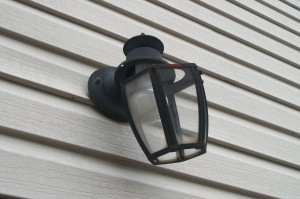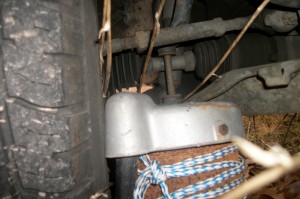 Spring time weather has finally arrived here in the Pocono Mountains and surrounding areas of Northeast Pennsylvania making it a perfect time to perform a simple inspection that may save you from costly repairs and or injury. Since you are most likely outside maintaining the lawn or planting flowers, an exterior check of your home’s perimeter is not that much more work if you know what you should be looking for. A simple checklist, flashlight, pen and some paper are basically all you need.
Spring time weather has finally arrived here in the Pocono Mountains and surrounding areas of Northeast Pennsylvania making it a perfect time to perform a simple inspection that may save you from costly repairs and or injury. Since you are most likely outside maintaining the lawn or planting flowers, an exterior check of your home’s perimeter is not that much more work if you know what you should be looking for. A simple checklist, flashlight, pen and some paper are basically all you need.
If you really want to get fancy, make 4 sections on your list and label them Electrical, Plumbing, Structural and Trip and Fall. Some of the headings may cross cover similar areas to be inspected so items need only be listed once.
- Structural
- Look at decks, porches and overhangs for sagging ceilings, loose rails, boards and steps in disrepair. Make sure the supporting posts are secure in the ground and not rotted out of the footing.
- Examine the foundation for cracks and bulges. Retaining walls should be checked and have no buckling or loose sections. Make sure all drainage ports are clear of debris as rainwater and melting snow and ice may be a potential cause of collapse or water seepage into your home. Look at the sill and inspect for rot and insects.
- Look at the roofing checking for moss and other debris on the roof. Check for cracks, crumbling or missing shingles, wood rot and other damaged areas where a breach may be forming. Pay careful attention under trees.
- On the sides check for missing brick mortar, peeling paint, or stucco for cracking. Check for loose shingles and siding. Make sure flashings are in good shape and they are not missing or not peeling up.
- Examine the chimney for leaning or missing brick. Check the flashing, access doors and chimney caps for damaged or missing parts. Use a mirror to check for blockages.
- Check gutters and downspouts for leaves and debris, leaks, loose mountings and missing or separated sections. Staining on the siding could be a sign of a water or roof problem.
-
 Electrical
Electrical
- Check trees around the house to be sure they’re not threatening wires.
- Check for loose receptacles, busted outlet covers and loose electrical boxes. Pay attention to receptacles and fixtures for scorch marks, they may be a sign of loose and corroded wiring.
- GFCI outlets can be tested by plugging in a hair dryer or lamp and then hitting the test and reset buttons to see if the device loses power.
- Check landscaping lights for exposed wiring.
- Inspect the electrical meter and service entrance for signs of wear, damage, sparking and overheating.
- Make sure any trees around the house are not threatening overhead wires.
 Plumbing
Plumbing
- Check for leaking pipes, they are a potential source of rot, staining and other costly problems. Inspect spigots, garden hoses and nozzles for water leaks as damage causing insects are attracted by moisture. Water bills may be significantly affected too.
- Check areas around wells covers for damage, debris and pinched wiring. Well water tanks and exposed plumbing can be inspected for leaks.
- Septic systems can be costly to repair so be sure to inspect sand mounds and tank areas for unusual amounts of moisture or seepage. Check cleanouts, caps and covers to make sure they are secure and in good condition. Holding tanks usually need pumping every 2-3 years and a professional septic service company can set you up on a maintenance schedule based on your equipment.
- Inspect air conditioning and heat pump units for proper condensate drainage. Check for debris, bushes or trees that may be touching the units.
- Trip and Fall
- Check for cracks in asphalt or concrete on driveway, sidewalks, and paths. These tripping hazards can collect water that will do more damage during the colder months.
- Check for sufficient and malfunctioning lighting.
- Look around fences and gates for sharp edges, loose parts and leaning.
- Check that landscape barriers are secure in the ground and that wiring or plumbing is covered or guarded.
- Look for rotten or damaged trees and branches that might be knocked down wind or the weight of rainwater.
- Exterior and interior entrance matting should be inspected for rips, tears, soil and general condition. Proper entrance matting inside and outside entryways can reduce the potential for slipping, tripping and falling. A professional carpet cleaning service can assist you in not only housekeeping but in selecting the proper floor mat.
Don’t be afraid to add more items to your list as you see fit. Your home is a major investment and nothing is too small to be overlooked. Most importantly keep your eyes open for anything unusual and out of the ordinary. Consult a professional service company for any concerns, most offer free estimates. If you have any suggestions please let us know as we would like to hear from you. Contact us at info@procleaner.biz.